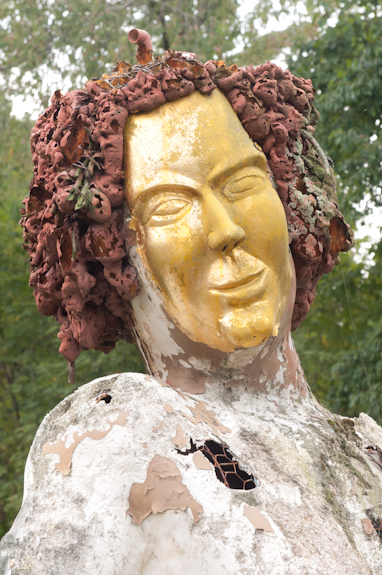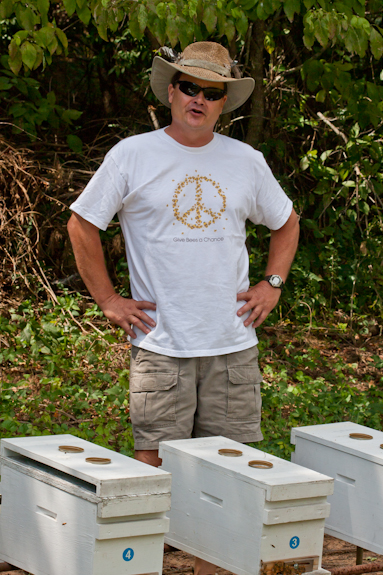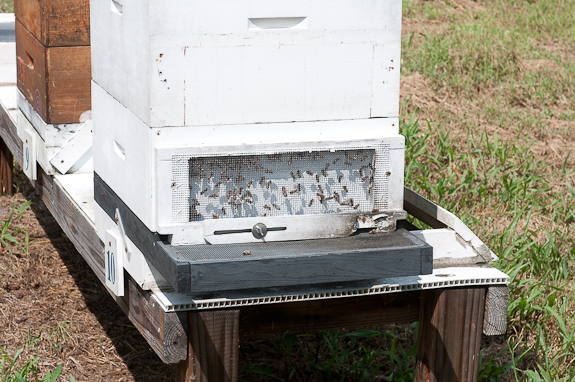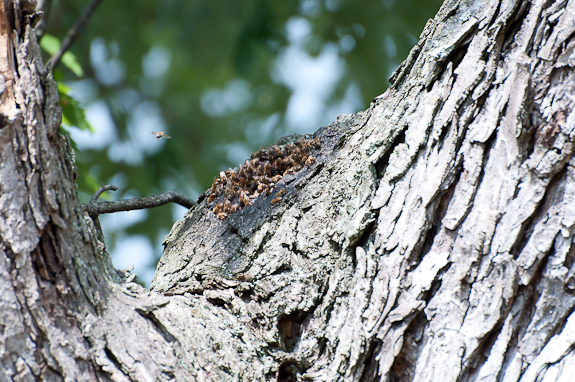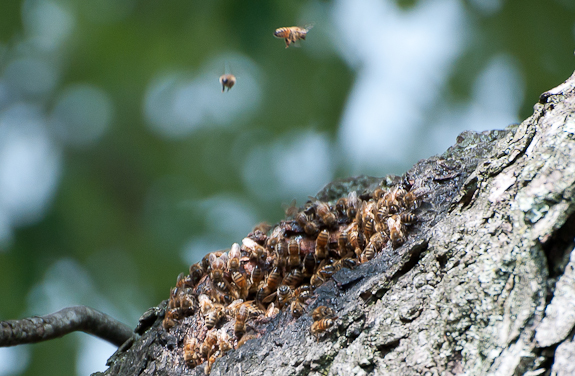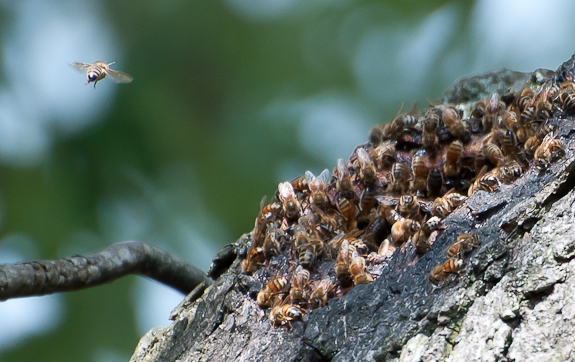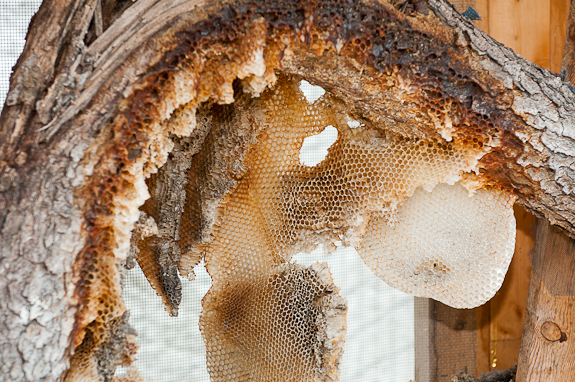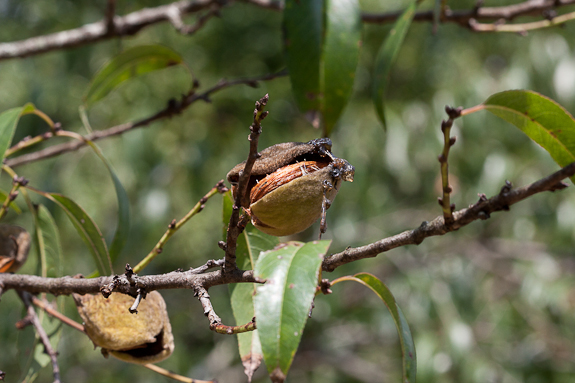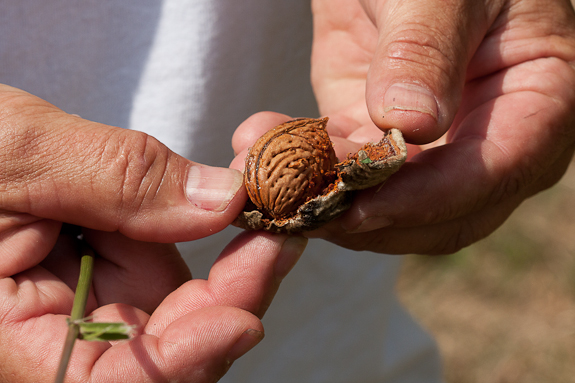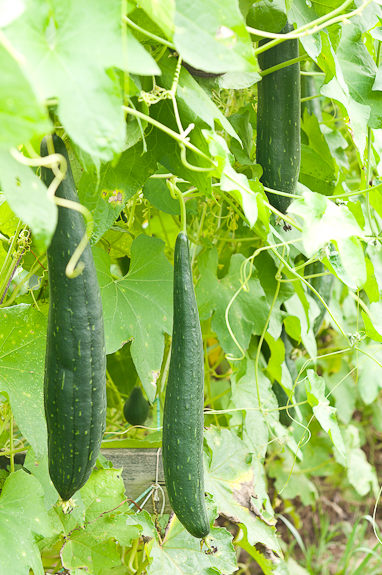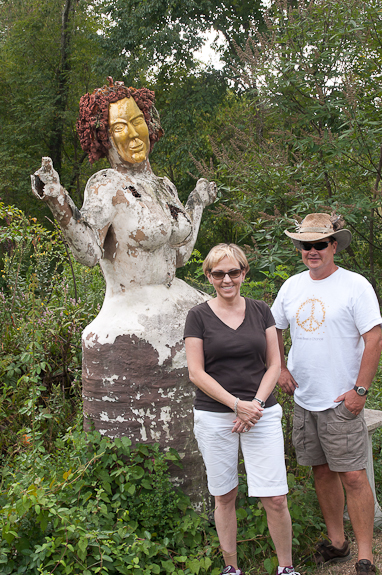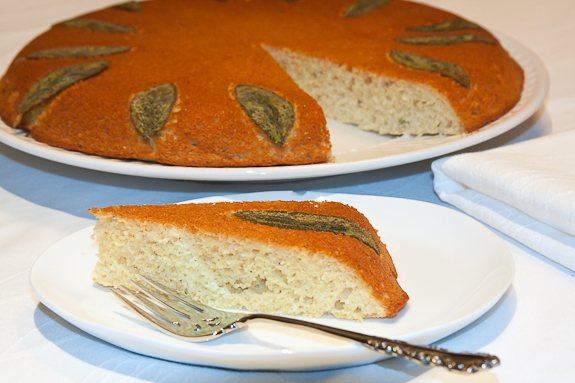Honey and Sage Skillet Cornbread and a Visit to Green Goddess Farms in Asheville, North Carolin
I have recently decided to incorporate more honey into my cooking and baking, rather than sugar. Honey is definitely better for you and is certainly more natural.
I was also intrigued with what was going on with the origins of our honey and more importantly, what’s up with the honey bees? So, being the curious now 50 year-old gal that I am, Roger and I went On The Road to visit the Green Goddess Farm in West Asheville, North Carolina to see what all the buzz is about! Don’t give me a hard time about saying that, you know I just had to do it. 😉
Carl and Joan Chesick own this 13-acre organic farm that is home to many types of produce, but they are probably best known for their bees and their honey. They have been farming since the 1980s, but moved to this property in 1994 and the place has been buzzing for the past eight years (with bees, that is).
I never realized there was so much to learn about bees and honey. Did you know that much of the honey in the U.S. comes from other countries, including China? Did you also know that 20-40% of all honey bees have died in the past 5 years? That certainly got my attention.
There has been a fair amount of press over the last few years about beekeepers losing their bees. The loses have been attributed to many factors, some of which are mites, pesticides and viruses.
Many beekeepers have opted to use substances like formic acid or thymol to treat their hives. However, Chesick, who is the director of the Buncombe County Beekeepers Chapter, is one of the few beekeepers in the Asheville area that has decided to raise his bees naturally.
Many beekeepers would say that is risky. For Chesick, it’s a matter of quality and sticking to a different approach that he felt would pay off.
The goal is to ultimately have bees that are more resistant to disease (relate this basically to people that take too many antibiotics. Eventually, we become resistant to them). Carl said that at first people just thought he was lucky when he didn’t lose his bees, but after proving that they are more resistant when not treated, now he is no longer lucky. They believe that he is right. You can read more here.
Carl told us that many of the younger farmers in Asheville are getting into beekeeping and they would not dream of treating the bees. It is a good thing that is the case since bees will travel within a three mile radius and then come back to their hives.
Since there are literally one hundred beekeepers in the 28806 zip code (in Asheville) and eight of them within a half mile radius from Green Goddess Farm, the hope is that the newer beekeepers are following his no treatment approach since these bees cross pollinate.
According to an article posted in the New York Times just yesterday, “A fungus tag-teaming with a virus have apparently interacted to cause the problem (the loss of bees), according to a paper by Army scientists in Maryland and bee experts in Montana in the online science journal PLoS One.
Exactly how that double-whammy kills bees remains uncertain, the scientists said — a subject for the next round of research. But there are solid clues: both the virus and the fungus proliferate in cool, damp weather, and both do their dirty work in the bee gut, suggesting that insect nutrition is somehow compromised.”
It will be interesting to see how this new information affects the methods and theories that the Chesicks have going forward.
Since their bees are thriving, Carl and Joan had a banner honey year this year. They had twenty gallons of spring honey, twenty-five gallons of summer honey and five gallons of Sourwood honey. You can find their honey at the West Asheville Tailgate Market or at Joan’s office. She is an audiologist in Asheville.
I know that bee pollen is used for medicinal purposes and that honey is known to have great health benefits. I was not aware of something called propolis or “bee glue”. This is something that the bees collect and use to seal cracks in their hives, among other things. Carl will gather this resin by carefully scraping it from the screens of the hives and then he makes a tincture from the resin. This tincture is known to have numerous healing qualities.
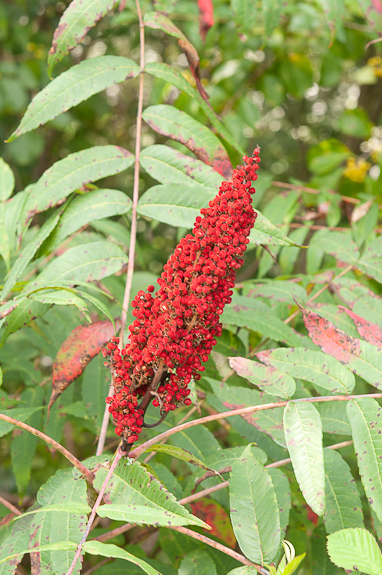
Carl also told us that they are trying to get a honey standard put in place. Honey is a pure varietal, very much like wine. All honeys taste very different and they will be different depending on their origins. The only way to truly confirm the type of honey is to identify the pollen under a microscope and that’s complicated.
Unfortunately, many people are not honest about what they are selling. Honey is becoming very expensive, especially with the loss of so many bees. Sadly, some people are slapping a label on sugar syrup or high fructose corn syrup with food coloring and additives and are calling it honey.
Carl said you should be sure to read the entire label on the honey you are about to purchase. You may find that a “Product of the U.S.” can contain ingredients that have been repackaged and actually originate from another country. That is where the trouble begins. Be sure to get your honey from a local source that you can trust. Where’s your honey from? That is what I want to know.
In addition to beekeeping, Carl and Joan grow all sorts of produce that keeps them busy in the garden. As Joan says “pollination means bounteous crops” and that they have. They grow okra (lots and lots of okra!), Super Marconi Italian green beans (a favorite in our home), Jerusalem artichokes, blueberries, sumac (which the bees love), ginseng, Pokeweed and these incredible loofah sponges I sure didn’t know that sponges grow on trees, did you?
They also have a large number of trees on the farm with edible nuts, including hickory nuts and hard shell almonds (which taste like an almond on steroids). Joan does sell some of the produce, however, most of it is put up for their own use throughout the rest of the year. She is very busy canning, dehydrating and freezing during the summer months.
Thanks to Joan and Carl for their hospitality and for helping us understand more about the bee mystery and honey. We came home with some of their summer and raw honey. As Carl said, honey is perfect straight out of the jar over ice cream, but I wanted to use it in something more savory.
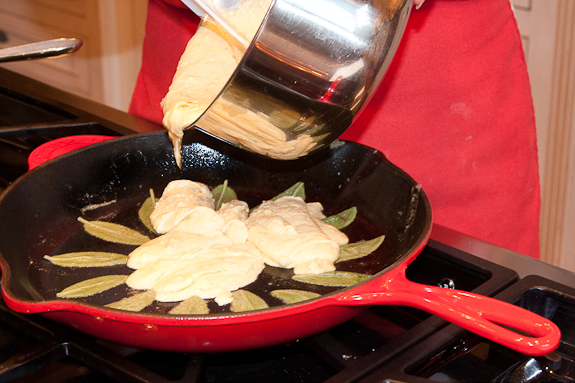
This cornbread is attractive to serve and has just a bit of sweetness. The honey really made a difference in keeping it incredibly moist (unlike most cornbread). It is perfect served with many fall dishes. Be sure to drizzle a bit of honey over the warm cornbread. My goodness…that will knock your socks off!
Since the honey from Green Goddess Farms was good enough to eat right out of the jar, I think that is what I will do with the rest of it!
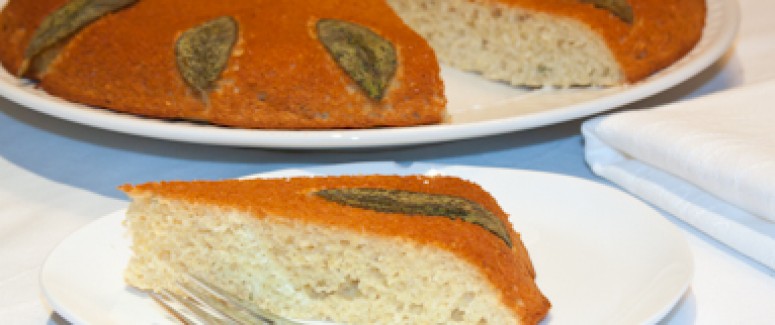
Sage and Honey Skillet Cornbread
Adapted from Bon Appetit
Serves 8-10
Ingredients:
1 cup cornmeal (preferably whole grain, stone-ground)
1 cup unbleached all purpose flour
1 tablespoon baking powder
1 teaspoon salt
2 teaspoons chopped fresh sage leaves, plus 12 whole fresh sage leaves
1 cup whole milk
1/2 cup honey
1 large egg
Directions:
Preheat oven to 400°F. Heat heavy ten-inch-diameter ovenproof skillet (preferably cast-iron) in oven ten minutes.
Whisk first four ingredients and two teaspoons chopped sage in large bowl to blend. Whisk milk, honey, and egg in medium bowl to blend.
Remove skillet from oven; add one-half cup butter. Swirl until butter is melted. Pour all except two tablespoons butter into egg mixture. Add whole sage leaves to butter in skillet; toss to coat. Arrange leaves over bottom of skillet, spacing apart.
Add egg mixture to cornmeal mixture; stir until just combined (do not overmix). Pour batter over sage leaves in skillet. Bake until browned around edges and tester inserted into center comes out clean, about twenty minutes. Cool in skillet ten minutes. Invert onto platter. If necessary, reposition sage leaves atop cornbread.
Serve warm with butter and drizzle with honey.

